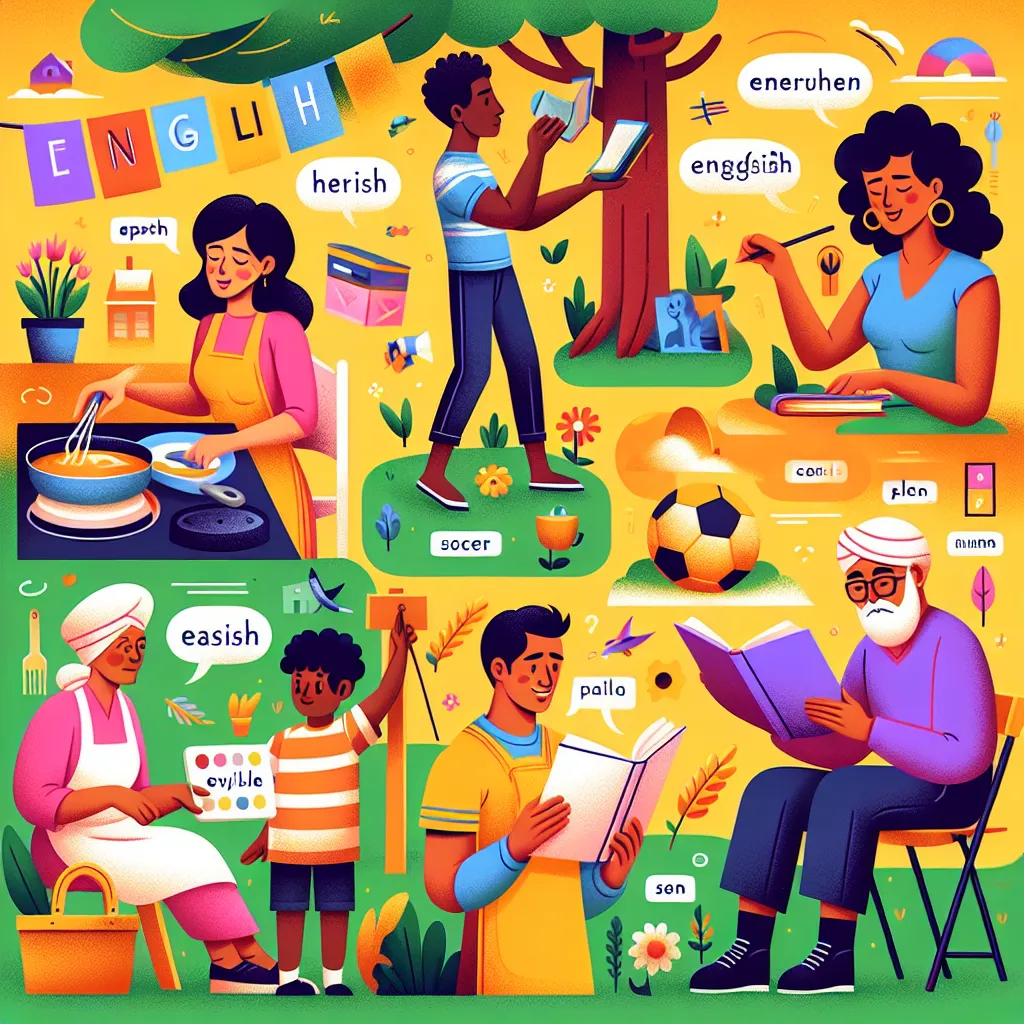Are you looking for innovative ways to enhance your English language skills? Collaborative projects offer an exciting and effective approach to language learning. In this article, we’ll explore valuable Tips For Mastering English Through Collaborative Projects, providing you with practical strategies to boost your language proficiency while working with others.
Why Collaborative Projects Are Powerful for English Learning
Collaborative projects in English learning provide a unique opportunity to practice language skills in a real-world context. By working together with peers, learners can improve their communication, problem-solving, and critical thinking abilities while simultaneously enhancing their English proficiency.
 Students collaborating on English project
Students collaborating on English project
Benefits of Collaborative English Learning
- Authentic language practice
- Increased motivation and engagement
- Exposure to diverse perspectives and ideas
- Development of teamwork and leadership skills
- Enhanced cultural understanding
Tips for Successful English Learning Through Collaborative Projects
1. Choose Engaging and Relevant Topics
Select project topics that are interesting and relevant to all team members. This ensures everyone is motivated to participate actively.
- Example: A group of business English learners might choose to create a mock marketing campaign for a fictional product, allowing them to practice business vocabulary and presentation skills.
2. Establish Clear Communication Guidelines
Set ground rules for communication within the group, emphasizing the use of English as much as possible.
- Tip: Agree on a “language monitor” role that rotates among team members, encouraging everyone to speak English during project discussions.
3. Utilize Technology for Collaboration
Leverage online tools and platforms to facilitate collaboration, especially for remote team members.
- Recommended tools:
- Google Docs for collaborative writing
- Zoom or Skype for video conferences
- Trello for project management
4. Incorporate Multimedia Elements
Encourage the use of various media in projects to cater to different learning styles and enhance engagement.
- Project idea: Create a video documentary on a local cultural event, combining research, script writing, filming, and editing skills.
5. Focus on Process as Well as Outcome
Emphasize the importance of the collaborative process, not just the final product.
- Activity: Regular reflection sessions where team members discuss their learning progress and challenges in English.
6. Assign Roles Based on Language Skills
Distribute project roles that allow each member to utilize their strengths while challenging their weaker areas.
- Example: A stronger speaker might take on the role of presenter, while a member with better writing skills could focus on report writing.
7. Encourage Peer Feedback and Support
Create a supportive environment where team members can provide constructive feedback on each other’s language use.
- Technique: Implement a “two stars and a wish” feedback system, where peers highlight two positive aspects and one area for improvement in each other’s work.
Implementing Collaborative Projects in Different Settings
In the Classroom
Teachers can design collaborative projects that align with curriculum goals while promoting active language use.
- Project example: A class-wide debate on a current issue, requiring research, argumentation, and public speaking skills.
Online Learning Environments
Virtual collaborative projects can connect learners from different parts of the world, offering diverse linguistic and cultural exchanges.
- Idea: An international online book club where members collaborate to create a multilingual book review blog.
Self-Study Groups
Self-organized study groups can use collaborative projects to maintain motivation and accountability in their English learning journey.
- Activity: A weekly language exchange meetup where participants collaborate on creating and solving English language puzzles and games.
Overcoming Common Challenges in Collaborative English Projects
Dealing with Mixed Proficiency Levels
- Strategy: Pair more proficient learners with those who need more support, encouraging peer teaching and learning.
Maintaining English Use Throughout the Project
- Tip: Create a point system that rewards consistent English use during project work.
Balancing Individual Contributions
- Approach: Use project management tools to track and ensure equal participation from all team members.
Next Steps: Taking Your Collaborative English Learning Further
- Join online language exchange communities to find project partners.
- Participate in international collaborative initiatives like global classroom projects.
- Start a blog or podcast with fellow English learners, collaborating on content creation.
For more ideas on enhancing your English skills through interactive methods, check out our article on strategies for mastering English through peer teaching.
Conclusion
Collaborative projects offer a dynamic and effective way to master English, combining language practice with real-world skills development. By implementing these tips and strategies, you can create engaging, productive learning experiences that accelerate your English proficiency. Remember, the key to success lies in active participation, open communication, and a willingness to learn from your peers. Start your collaborative English learning journey today and watch your language skills soar!




